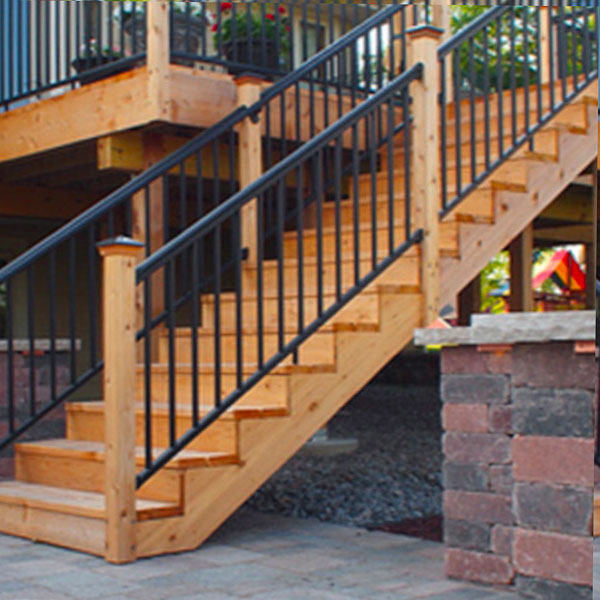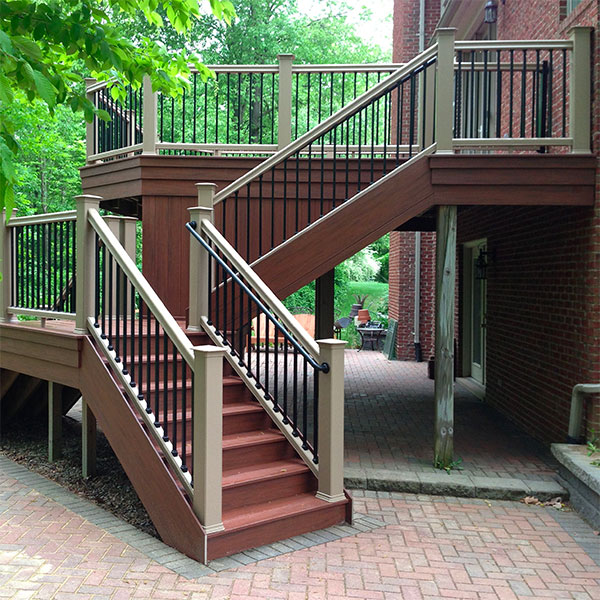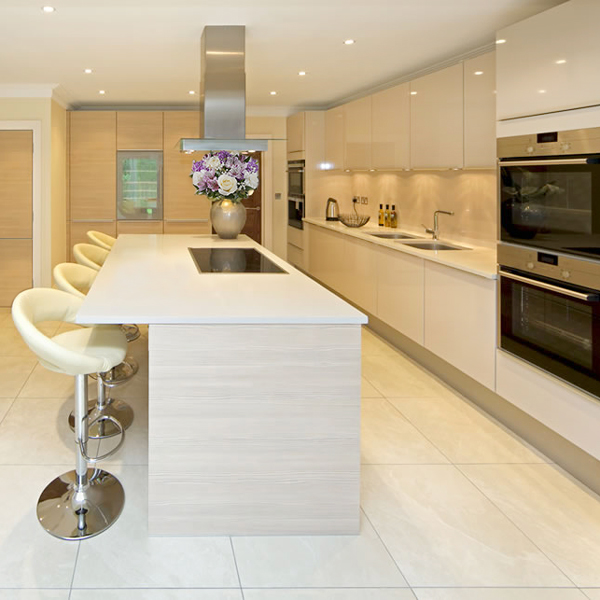SLIP & FALL PROBLEMS ON SPECIFIC BUILDING MATERIALS
The materials that make up our stairs, porches, decks, and floors can make a big difference in the potential risk of a slip and fall. Natural wood, synthetic wood, concrete, and ceramic tile can all be safe building materials depending on how, where, and when they’re used. In this section, we evaluate the slip and fall risks of the most popular building materials and offer recommendations on how to maximize traction in almost any environmental condition.
NATURAL WOOD
Natural wood is the most widely used structural material in residential applications for floors and stairs. Inside the home, you will find hardwoods, like oak and maple, with a smooth polyurethane or enamel finish. Outside the home, it’s common to find relatively inexpensive pressure-treated pine, or the more expensive cedar, redwood, teak, and other rot-resistant woods used in decks, patios, and stairs.

SYNTHETIC WOOD
Synthetic wood, also known as artificial wood, composite wood, or plastic wood, has become increasingly popular as an outdoor building material for decks, patios, and stairs. While the initial cost is higher than natural wood, synthetic wood’s long life, uniformity, and low maintenance requirements make the material an attractive choice for outdoor environments.
Consumer Reports highlighted in 2020 that synthetic decking material can be more slippery than natural wood. If your Trex or other synthetic wood is slippery, learn how to improve traction in our feature story on making synthetic decking less slippery.

CONCRETE
Concrete is a favored material for its strength and durability and is widely used in residential construction. When used outside, the aggregate used in unfinished concrete provides good traction in all but icy and snowy conditions. When used inside, concrete is often polished and finished with an elastomeric paint or sealer that looks beautiful but can be slippery when water or debris lay on the surface.

CERAMIC TILE
Ceramic tile is often used in spaces where water is present, such as bathrooms, kitchens, laundry, and utility rooms. The impermeable ceramic finish makes clean-up a breeze but depending on the finish of the ceramic tile, it can be quite slippery when wet.
If you have any specific questions about a building material in your home that you’d like to make less hazardous, contact HandiTread’s specialists for advice and recommendations at 877-328-7389.

